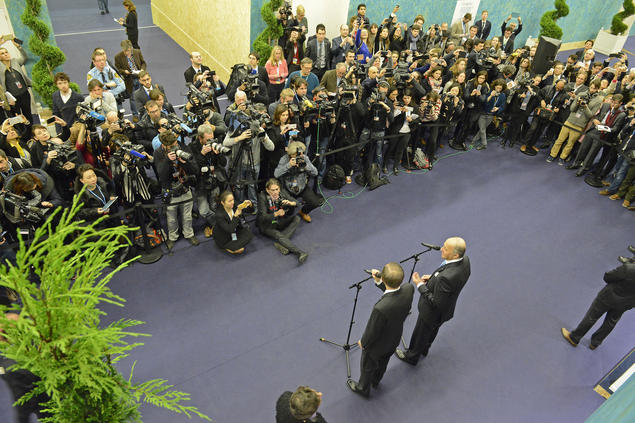A ‘Paris moment’ for Biodiversity? Lessons for a new biodiversity regime

Countries have failed to realise most of the internationally agreed biodiversity goals, and biodiversity loss is expected to continue at high pace. Rethinking biodiversity governance is thus imminent. Are there lessons to learn from the UN climate change regime?
Parties to the Convention on Biological Diversity (CBD) will meet from 17 to 29 November 2018, in Sharm El-Sheikh in Egypt, and start negotiations about a new global plan for biodiversity. This global plan will succeed the current CBD Strategic Plan 2010–2020, and will be agreed on in China in 2020.
The Paris Agreement by the United Nations Framework Convention on Climate Change (UNFCCC) still has to prove its effectiveness, but an analysis of the agreement itself and the process towards it does provide some important lessons - and warnings - for the biodiversity negotiations in the coming two years. These insights are presented in a new policy brief presented by the PBL Netherlands Environmental Assessment Agency, in collaboration with the Institute for Sustainable Development and International Relations (IDDRI), IVM Institute for Environmental Studies (VU University Amsterdam) and the Fridtjof Nansen Institute (FNI).
Needs momentum
 After the failed negotiations of the UNFCCC Conference of the Parties (COP) in Copenhagen, the international climate regime has undergone a paradigm shift, from a top-down model to a hybrid structure of voluntary commitments and binding rules and regulations that also support the inclusion of non-state actors.
After the failed negotiations of the UNFCCC Conference of the Parties (COP) in Copenhagen, the international climate regime has undergone a paradigm shift, from a top-down model to a hybrid structure of voluntary commitments and binding rules and regulations that also support the inclusion of non-state actors.
As the time until the CBD COP15 in Beijing is drastically shorter than the four years it took to come to the Paris Agreement, and seeing that biodiversity continues to decline, the need to take action is imminent, and positive momentum needs to be created towards the COP in 2020 in China, at which time decisions will be taken.
This is also why FNI is part of a global expert network which is 'rethinking biodiversity governance', aiming to identify the main challenges facing the current regime, and to map out a course for the future.
The Paris architecture
The architecture of the Paris Agreement does provide important insights to support the development of the new global framework for biodiversity. This architecture consists of a long-term quantitative goal, voluntary commitments by state and non-state actors, as well as long-term strategies. Moreover, it is important to note that the voluntary commitments by countries are embedded in a binding system with monitoring, reporting and verification, as well as a mechanism for increasing ambition levels.
The UNFCCC, furthermore, has actively involved non-state actors in the climate regime. This has several benefits, such as the inclusion and engagement of new actors; helping to build momentum; fostering innovative and experimental governance arrangements to overcome gridlock in the negotiations; and building confidence for governments as well as enabling and pushing nations to adopt more ambitious goals. If non-state actors are more ambitiously involved in the biodiversity regime, these benefits could apply to the CBD, as well.
Elements to consider
Although climate and biodiversity are inherently different problems, various elements of the Paris Agreement could be considered for implementation, such as quantitative long-term targets, voluntary commitments by state and non-state actors, and procedural obligations, including a strong review and ratcheting-up mechanism to evaluate the adequacy of commitments in light of the long-term objective. These elements should not be looked at in isolation; countries will have to develop a coherent set of features for the CBD post-2020 framework to trigger action across societies.
Taking lessons learned from the UNFCCC failures and accomplishments does provide insights for a more inclusive, effective and broadly supported post-2020 global biodiversity framework.
Related reading: FNI presents study on national implementation of the UN Biodiversity Convention
